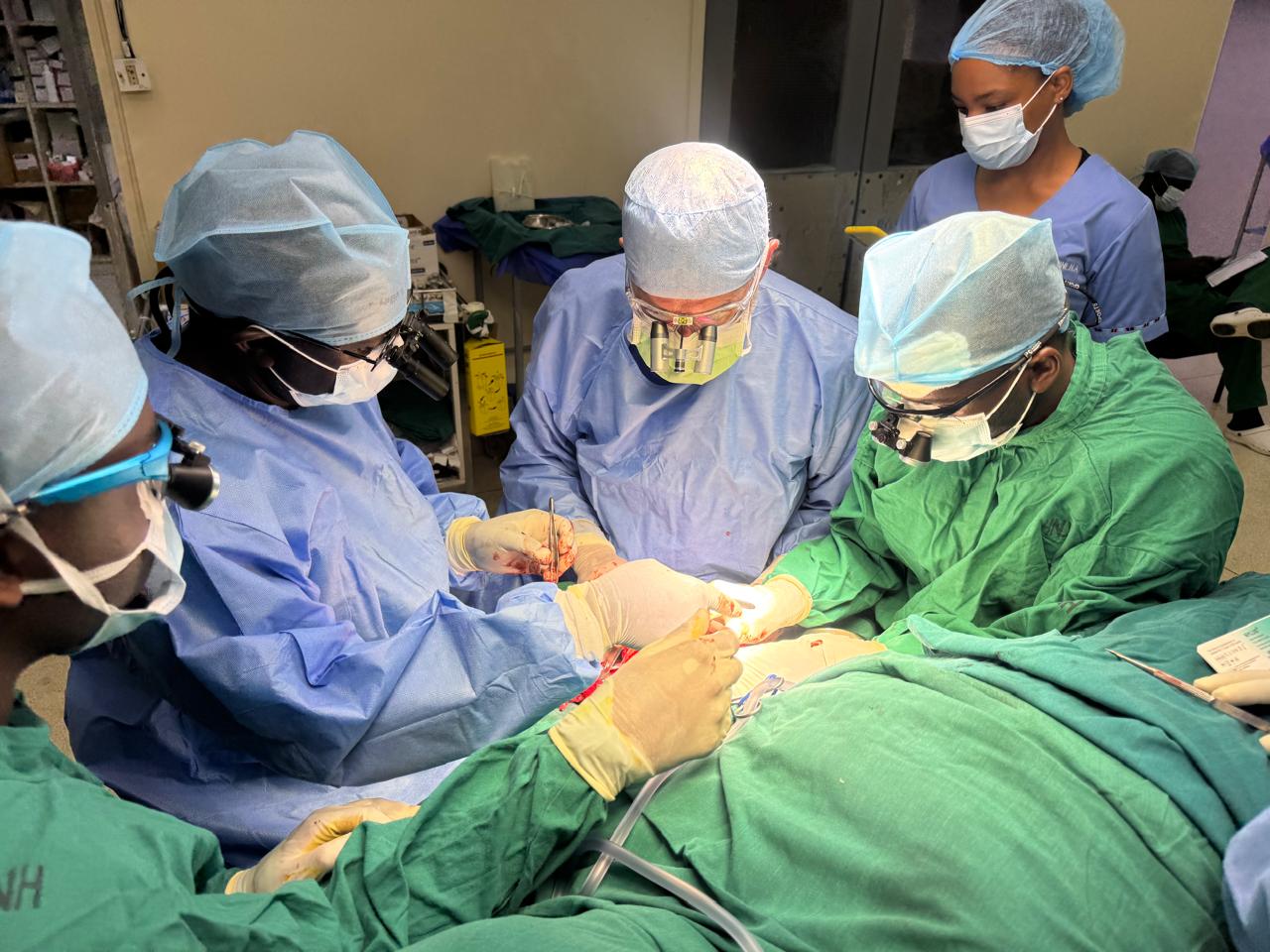

Transhumeral surgery is a life-changing medical procedure
that offers hope to individuals who have lost part of their upper arm, often
due to trauma, infection, or medical conditions such as cancer.
Dr. Benjamin Wabwire, Head of Plastic and Reproductive
Surgery at Kenyatta National Hospital (KNH), describes it as one of the levels
of upper-limb amputation.
According to him, the surgery is an amputation that occurs
between the shoulder and elbow joints.
It is classified as an "above-elbow" amputation
and is more complex than lower-level limb removals because it involves the loss
of the elbow joint, a critical component for arm mobility.
“The procedure involves removing the arm above the elbow,
specifically through the humerus bone,” Dr. Wabwire explains.
“This is a necessary step toward recovery, rehabilitation,
and reintegration into society for many patients.”
This type of surgery, he adds, is typically performed when
the lower part of the arm is severely injured or diseased beyond repair.
“Common causes
include traumatic injuries from road accidents or industrial incidents,
aggressive infections, tumours affecting the bones or muscles of the upper arm,
and complications from chronic illnesses like diabetes,” Wabwire noted.
Dr. Wabwire also highlights that transhumeral amputations
present unique challenges compared to lower-limb amputations.
“This is due to the
complexity of the upper limb’s structure and its critical role in everyday
functions such as dressing, feeding, and writing.”
He further explains the intricate surgical process involved:
“The amputation procedure begins with the patient being
placed under general anaesthesia. The surgeon makes an incision around the
affected part of the arm, taking care to preserve as much healthy tissue,
muscle, and bone as possible. The humerus bone is then carefully cut, usually
at a level that ensures the possibility of future prosthetic fitting,” he
explained
“Major nerves, including the radial, median, and ulnar
nerves, are identified and gently removed to reduce the risk of painful nerve
endings. Surgeons also shape the remaining muscle to form a well-rounded stump,
which helps support prosthetic devices later. Blood vessels are tied off to
prevent excessive bleeding, and the wound is closed with stitches or staples.”
In some advanced cases, he notes, surgeons may perform
targeted muscle reinnervation (TMR), a technique that reassigns nerves from the
amputated limb to other muscle groups to improve prosthetic control.
After surgery, the healing process requires patience, as
noted by Dr. Joel Lessan, Head of Department, Specialized Surgical Services at
Kenyatta National Hospital.
Recovery, he
explains, is a gradual process that includes wound healing, pain management,
physical therapy, and emotional support.
“Phantom limb sensation—feelings that the missing arm is
still present—is a normal occurrence that diminishes over time but may persist
in some cases,” says Dr. Lessan.
“Physical therapy begins as soon as the wound starts healing.
Therapists work with patients to maintain shoulder flexibility, prevent joint
stiffness, and strengthen the remaining muscles. Patients are also trained in
using assistive devices to perform daily tasks independently.”
“Prosthetic fitting is an essential part of rehabilitation,”
he continues, “and typically begins several weeks to a few months after
surgery, depending on how well the stump heals. The prosthetic limb can either
be non-functional or functional, with options ranging from basic mechanical prosthetics
to advanced myoelectric limbs that respond to muscle signals.”
Dr. Lessan also points out the broader challenges
transhumeral amputees face.
“The loss of a major limb affects self-image, independence,
and overall quality of life. Learning to use a prosthesis takes time, patience,
and support. High-tech prosthetic arms can be expensive and may not be
accessible to all patients, especially in low-income regions.”
On a more optimistic note, he highlights significant
progress in prosthetic technology.
“Modern myoelectric
prosthetics allow users to control artificial limbs using the electrical
signals generated by muscles. These limbs can perform tasks such as gripping,
rotating, and even sensing pressure. Ongoing research is exploring
brain-machine interfaces, which may one day allow for seamless control of artificial
limbs through thought.”
Dr. Lessan emphasizes that the emotional and psychological
impact of losing an arm must not be overlooked.
“Many patients go through stages of grief, denial, anger,
and eventually acceptance. Support groups, counseling, and peer mentorship
programs play a crucial role in helping individuals adapt to their new reality,”
Dr Lessan
Social reintegration, according to Dr. Wabwire, is another
critical aspect of recovery.
“With proper support, individuals can return to work,
education, and community activities. Public awareness campaigns and disability
inclusion policies are essential in reducing stigma and promoting the rights
and dignity of amputees.”
Transhumeral surgery is a complex but often necessary
procedure that can significantly improve a patient's quality of life when
performed skillfully and followed by comprehensive rehabilitation.
While it presents many challenges, continued advancements in
surgical techniques, prosthetic technologies, and psychological support systems
are transforming outcomes for patients around the world.







![[PHOTOS] Scenes at MP Were's burial service](/_next/image?url=https%3A%2F%2Fcdn.radioafrica.digital%2Fimage%2F2025%2F05%2Fdc49122e-15f1-47c8-a371-a2b7ae06f2cf.jpg&w=3840&q=100)
